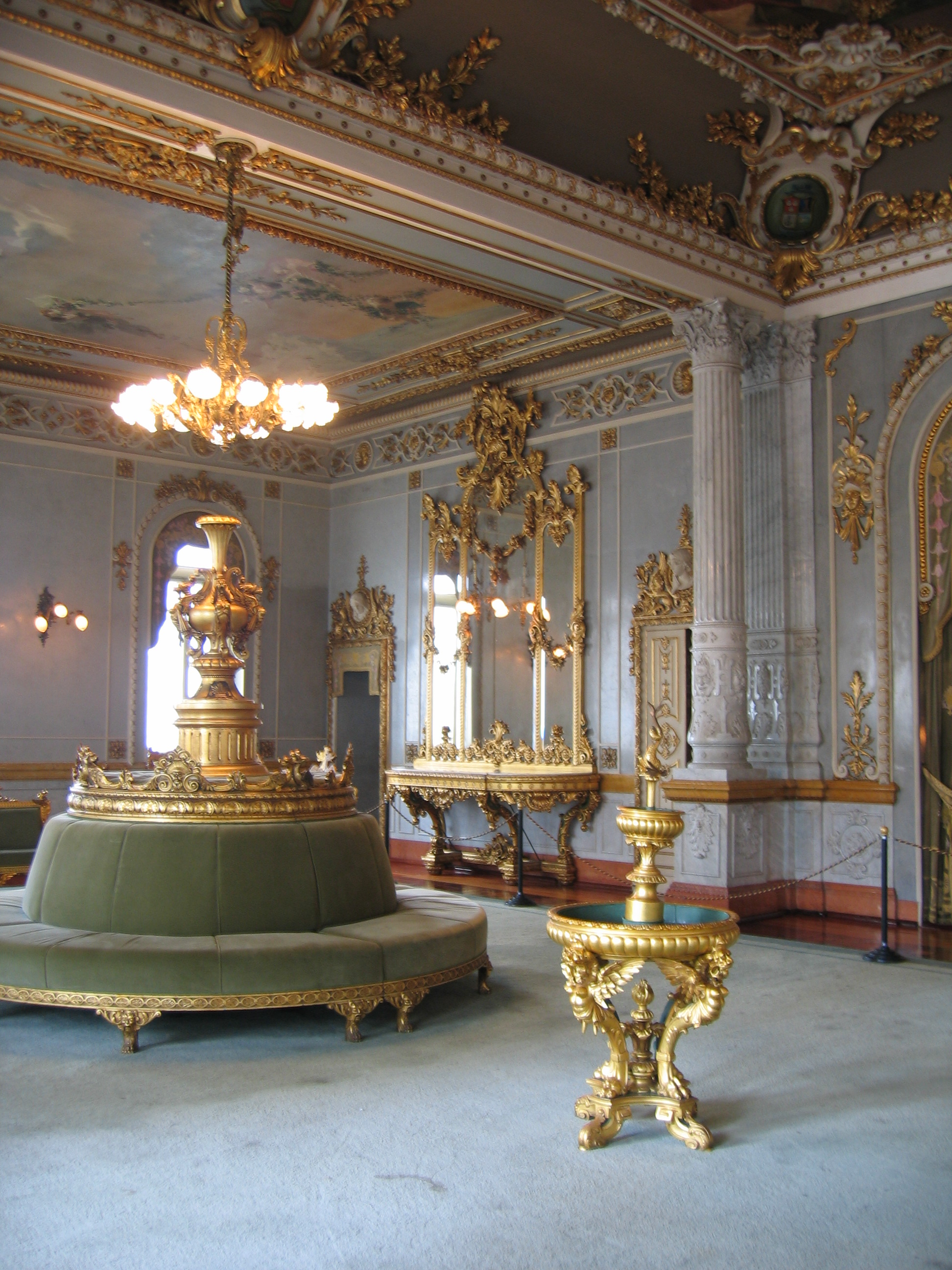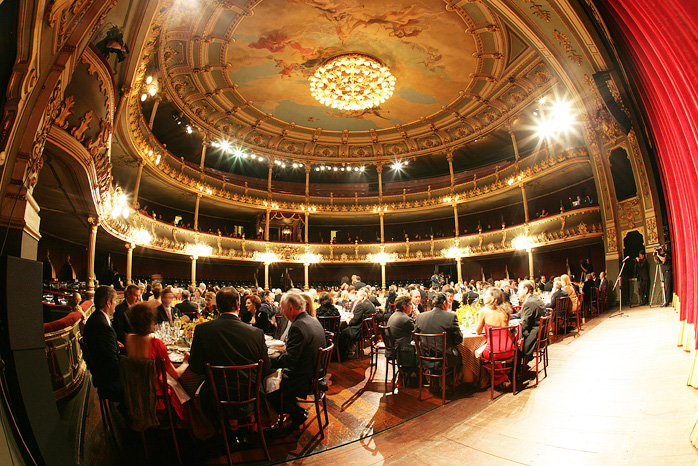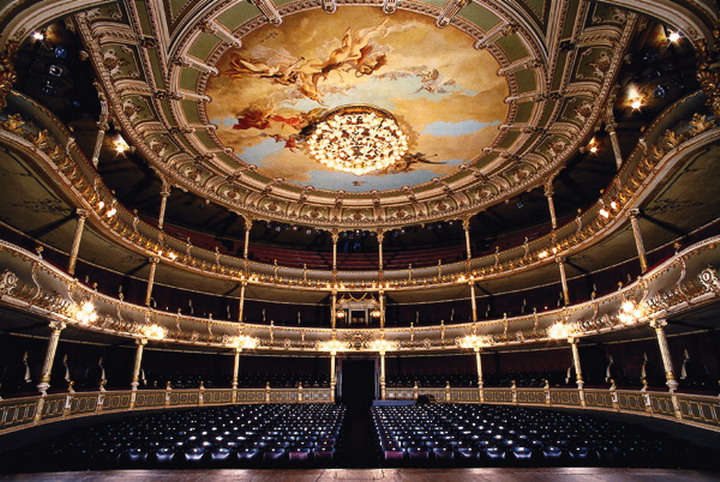Costa Rica Entertainment News -It contains tonnes of Italian marble, vast frescoes, ornate parquet floors and possibly at least one ghost; just your regular beautifully restored late 19th century theatre really. However, what is surprising is that this jewel of a building is in the centre of San Jose, the capital of Costa Rica.
 This Central American country is most associated with an incredible richness and diversity of wildlife and impressive conservation efforts to preserve its rainforests. It’s a land known for its sloths and toucans, howler monkeys and scarlet macaws rather than opera and other cultural pursuits.
This Central American country is most associated with an incredible richness and diversity of wildlife and impressive conservation efforts to preserve its rainforests. It’s a land known for its sloths and toucans, howler monkeys and scarlet macaws rather than opera and other cultural pursuits.
But the Teatro Nacional de Costa Rica (National Theatre) is the pride and joy of San Jose’s citizens, as it has been since the curtain rose on opening night in 1897. Today it vies with the nearby Museum of Pre-Columbian Gold as the capital’s most popular visitor attraction.
It was the refusal of a famous opera singer of the day to sing in San Jose that spurred Ticos (as Costa Ricans call themselves) to fund the building of their theatre.
In the 1890s the nation’s capital had a population of only about 17,000 and was regarded as being rather provincial, something that rankled with many of its more well-to-do citizens. So, when Spanish soprano Adelina Patti,* one of the most famous opera signers of her era, snubbed the city while on a Central American tour because of the lack of a proper venue, Ticos were stung into action.
Costa Rica had gained its independence from Spain only in 1821 and had staged its first democratic elections in 1889 so was still in the early stages of becoming economically developed. But there was money about, mostly generated by the country’s banana and coffee producers.
It was the latter who volunteered to pay a tax on every bag of coffee exported that funded much of the project to build the theatre. The state and other private individuals also contributed. It took seven years to construct the theatre, and thanks to the rich coffee barons, no expense was spared.
The theatre has survived frequent earthquakes and has recently been undergoing a major restoration; while I was there, the theatre stage was swathed in plastic as the work continued.
The rather utilitarian neo-classical facade of the theatre belies the opulence that lies within. But once through the front doors and away from the throngs in the central plaza, the glories of the theatre begin to be revealed.
The vestibule floor is of Carrara marble from Italy, 22.5-carat gold has been used to adorn the walls and marble sculptures representing the muses add their imposing presence.
Through the doors leading to the theatre itself, two stairways curve up to the second floor. These provide a vantage point from which to study one of the theatre’s treasures – a huge ceiling fresco depicting Costa Rica’s banana and coffee growers. Unashamedly designed to pay homage to the men who made the construction possible, the fresco was painted by an Italian with an obvious lack of any hands-on experience of tropical horticulture.
The painting features a man carefully carrying a harvested bunch of bananas as if it was a bunch of flowers, rather than the way a banana plantation worker would actually do it (slung over a shoulder). Despite its inaccuracies (the painting also features coffee growing luxuriantly at sea level) the fresco has been judged one of the top 10 ceilings in the world (a little known title but one the Costa Ricans are proud of, especially as the list includes the Vatican’s Sistine Chapel and the Church of the Saviour of the Spilled Blood in St Petersburg).
Opposite the doors into the balcony seating (and boxes for the very rich, including one for the Costa Rican president) is the salon with tall windows on three sides. The floor is parquet, composed of red, black, pink and golden tropical woods. The walls are painted in jade green, embellished with gilding. Cherubs cavort on the ceiling.
The theatre, with its black leather seats and red velvet fittings, contains what at the time of construction  were two innovations in theatre design. Each seat automatically reclines as one leans back and most impressive of all, the floor of the stalls can be adjusted by means of an ingenious geared mechanism in the basement.
were two innovations in theatre design. Each seat automatically reclines as one leans back and most impressive of all, the floor of the stalls can be adjusted by means of an ingenious geared mechanism in the basement.
During theatrical or operatic performances the floor can be tilted towards the stage, giving the audience, even those in the back rows an unobstructed view. An angled floor, however, was unsuitable when the theatre needed to be used for balls or other similar functions so the mechanism would rumble into action to make the floor level.
While visitors recline in the seats, theatre guides recount how, as in the very best of theatre traditions, there is at least one ghost who makes relatively regular appearances to both staff and the odd patron. One is said to be a former theatre-goer, a man dressed in black evening clothes who sometimes materialises in the stalls or the boxes, apparently still suffering from about 100 years of unrequited love for one of the regular performers.
Spirits of a different kind inhabit the underground vault administered by the Costa Rican central bank, which is right next door to the theatre. This is the repository of the nation’s collection of pre-Columbian gold (pieces fashioned between 500 and 1500AD before colonisation by the Spanish).
Given the collection is priceless, it’s no wonder there’s a metal detector to walk through before one descends into the vault, which is entered through enormously thick metal doors. Guards watch visitors’ every move.
The museum houses the largest collection of pre-Columbian gold in the Americas, from a life-sized warrior clad in gold to tiny frogs. It’s the intricate and delicate golden animals that are just as beautiful if not more so than the larger pieces. The detail is incredible, including the rather macabre pieces featuring human legs dangling from the mouths of crocodiles and jaguars.
Most of the gold came from alluvial sources along Costa Rica’s south Pacific coastline. Artisans, who had to complete long apprenticeships, commonly used the lost-wax technique to create their animal and human figurines. This involved making a beeswax mould, covering this with clay which would then be heated. The wax would melt, leaving a hollow mould into which the gold was poured. Once the gold had cooled and hardened, the outer clay mould could be broken and the golden object polished.
It was not difficult to imagine an artisan carefully carving a perfect model of a tiny lizard or a bird based on the abundant wildlife that was all around him. What is amazing is that so many of these often tiny works of art are still with us today.
*Patti, at the height of her fame, commanded a fee of US$5000 for every performance … to be paid in gold. Ironically, she never did come to San Jose after the theatre was opened. Patti later retired to rural Wales, funded the building of a railway station on the Neath and Brecon railway, and died in 1919 aged 76.
By
Last updated 09:58 28/04/2014
Share
0
san josesan josesan jose
The paraquet floor of the theatre’s salon features Costa Rican native woods.
1 of 4« PreviousNext »
san jose cherubs DETAILED: Gilded cherubs cavort on the theatre’s grand staircase.
Travel A place by the sea All the fun of a weekend ‘excursion’ camp Fighting, screaming – having a great time Tourist fees work overseas Stunning church a must-see in Barcelona Living a Japan dream adventure Southern perspective inspiring Mansion comes up roses Sensational skiing, shops, sight-seeing Beauty spots inspire photographer
Ads by Google
Cheap Writing Servicesyeparticles.com
Get $10 Off Your Order. Satisfaction Guaranteed. Order Now!
It contains tonnes of Italian marble, vast frescoes, ornate parquet floors and possibly at least one ghost; just your regular beautifully restored late 19th century theatre really.
However, what is surprising is that this jewel of a building is in the centre of San Jose, the capital of Costa Rica.
This Central American country is most associated with an incredible richness and diversity of wildlife and impressive conservation efforts to preserve its rainforests. It’s a land known for its sloths and toucans, howler monkeys and scarlet macaws rather than opera and other cultural pursuits.
But the Teatro Nacional de Costa Rica (National Theatre) is the pride and joy of San Jose’s citizens, as it has been since the curtain rose on opening night in 1897. Today it vies with the nearby Museum of Pre-Columbian Gold as the capital’s most popular visitor attraction.
It was the refusal of a famous opera singer of the day to sing in San Jose that spurred Ticos (as Costa Ricans call themselves) to fund the building of their theatre.
In the 1890s the nation’s capital had a population of only about 17,000 and was regarded as being rather provincial, something that rankled with many of its more well-to-do citizens. So, when Spanish soprano Adelina Patti,* one of the most famous opera signers of her era, snubbed the city while on a Central American tour because of the lack of a proper venue, Ticos were stung into action.
Costa Rica had gained its independence from Spain only in 1821 and had staged its first democratic elections in 1889 so was still in the early stages of becoming economically developed. But there was money about, mostly generated by the country’s banana and coffee producers.
It was the latter who volunteered to pay a tax on every bag of coffee exported that funded much of the project to build the theatre. The state and other private individuals also contributed. It took seven years to construct the theatre, and thanks to the rich coffee barons, no expense was spared.
The theatre has survived frequent earthquakes and has recently been undergoing a major restoration; while I was there, the theatre stage was swathed in plastic as the work continued.
The rather utilitarian neo-classical facade of the theatre belies the opulence that lies within. But once through the front doors and away from the throngs in the central plaza, the glories of the theatre begin to be revealed.
The vestibule floor is of Carrara marble from Italy, 22.5-carat gold has been used to adorn the walls and marble sculptures representing the muses add their imposing presence.
Through the doors leading to the theatre itself, two stairways curve up to the second floor. These provide a vantage point from which to study one of the theatre’s treasures – a huge ceiling fresco depicting Costa Rica’s banana and coffee growers. Unashamedly designed to pay homage to the men who made the construction possible, the fresco was painted by an Italian with an obvious lack of any hands-on experience of tropical horticulture.
Ad Feedback
The painting features a man carefully carrying a harvested bunch of bananas as if it was a bunch of flowers, rather than the way a banana plantation worker would actually do it (slung over a shoulder). Despite its inaccuracies (the painting also features coffee growing luxuriantly at sea level) the fresco has been judged one of the top 10 ceilings in the world (a little known title but one the Costa Ricans are proud of, especially as the list includes the Vatican’s Sistine Chapel and the Church of the Saviour of the Spilled Blood in St Petersburg).
Opposite the doors into the balcony seating (and boxes for the very rich, including one for the Costa Rican president) is the salon with tall windows on three sides. The floor is parquet, composed of red, black, pink and golden tropical woods. The walls are painted in jade green, embellished with gilding. Cherubs cavort on the ceiling.
The theatre, with its black leather seats and red velvet fittings, contains what at the time of construction were two innovations in theatre design. Each seat automatically reclines as one leans back and most impressive of all, the floor of the stalls can be adjusted by means of an ingenious geared mechanism in the basement.
During theatrical or operatic performances the floor can be tilted towards the stage, giving the audience, even those in the back rows an unobstructed view. An angled floor, however, was unsuitable when the theatre needed to be used for balls or other similar functions so the mechanism would rumble into action to make the floor level.
While visitors recline in the seats, theatre guides recount how, as in the very best of theatre traditions, there is at least one ghost who makes relatively regular appearances to both staff and the odd patron. One is said to be a former theatre-goer, a man dressed in black evening clothes who sometimes materialises in the stalls or the boxes, apparently still suffering from about 100 years of unrequited love for one of the regular performers.
Spirits of a different kind inhabit the underground vault administered by the Costa Rican central bank, which is right next door to the theatre. This is the repository of the nation’s collection of pre-Columbian gold (pieces fashioned between 500 and 1500AD before colonisation by the Spanish).
Given the collection is priceless, it’s no wonder there’s a metal detector to walk through before one descends into the vault, which is entered through enormously thick metal doors. Guards watch visitors’ every move.
The museum houses the largest collection of pre-Columbian gold in the Americas, from a life-sized warrior clad in gold to tiny frogs. It’s the intricate and delicate golden animals that are just as beautiful if not more so than the larger pieces. The detail is incredible, including the rather macabre pieces featuring human legs dangling from the mouths of crocodiles and jaguars.
Most of the gold came from alluvial sources along Costa Rica’s south Pacific coastline. Artisans, who had to complete long apprenticeships, commonly used the lost-wax technique to create their animal and human figurines. This involved making a beeswax mould, covering this with clay which would then be heated. The wax would melt, leaving a hollow mould into which the gold was poured. Once the gold had cooled and hardened, the outer clay mould could be broken and the golden object polished.
It was not difficult to imagine an artisan carefully carving a perfect model of a tiny lizard or a bird based on the abundant wildlife that was all around him. What is amazing is that so many of these often tiny works of art are still with us today.
*Patti, at the height of her fame, commanded a fee of US$5000 for every performance … to be paid in gold. Ironically, she never did come to San Jose after the theatre was opened. Patti later retired to rural Wales, funded the building of a railway station on the Neath and Brecon railway, and died in 1919 aged 76.
By JILL WORRALL, Timaru Herald

